1. Introduction
Albania, a country with breathtaking coastlines, untamed mountains, and a rich past, is tucked away on the Balkan Peninsula in Southern Europe. Known as the “Land of the Eagles,” this small nation (approximately 28,748 km2) offers a mix of towns from the Ottoman era, wild wilderness, and bustling urban life. Albania is quickly overcoming its historical isolation to assert its position in contemporary Europe thanks to rising tourism, EU and NATO ambitions, and a revitalised sense of cultural identity (countrylicious, The Times, AP News, Facts.now, Encyclopaedia Britannica, Condé Nast Traveler, flaghopper.com).
2. Historical Overview
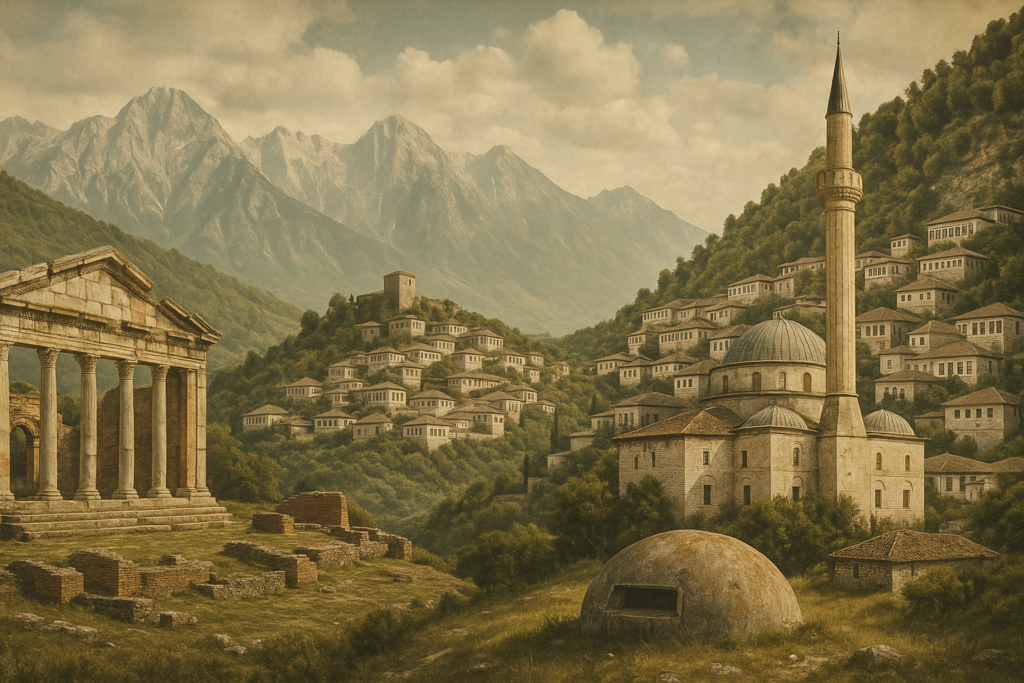
Ancient Illyrians & Roman Era
- The people of Albania are descended from the Illyrians and date back to the Bronze Age (around 2000 BCE). (Encyclopedia Britannica).
- Later a part of the Byzantine Empire, it was conquered by the Romans in the second century BCE. Visigoth, Hun, and Slavic invasions followed. (Encyclopedia Britannica).
Ottoman Rule & Independence
- fell in the 15th century under the Ottoman Empire.
- declared its independence following the Balkan Wars on November 28, 1912. (Encyclopedia Britannica).
- After World War I, it became a monarchy and then faced Italian occupation and the upheavals of World War II.
Communist Era & Transition
- Under dictator Enver Hoxha (1944–1985), Albania isolated itself even from USSR & China, building ~173,000 bunkers (Facts.now).
- Post-1991: democratization, mass emigration, economic transformation. NATO membership in 2009, EU candidacy status (flaghopper.com).
3. Geography & Climate
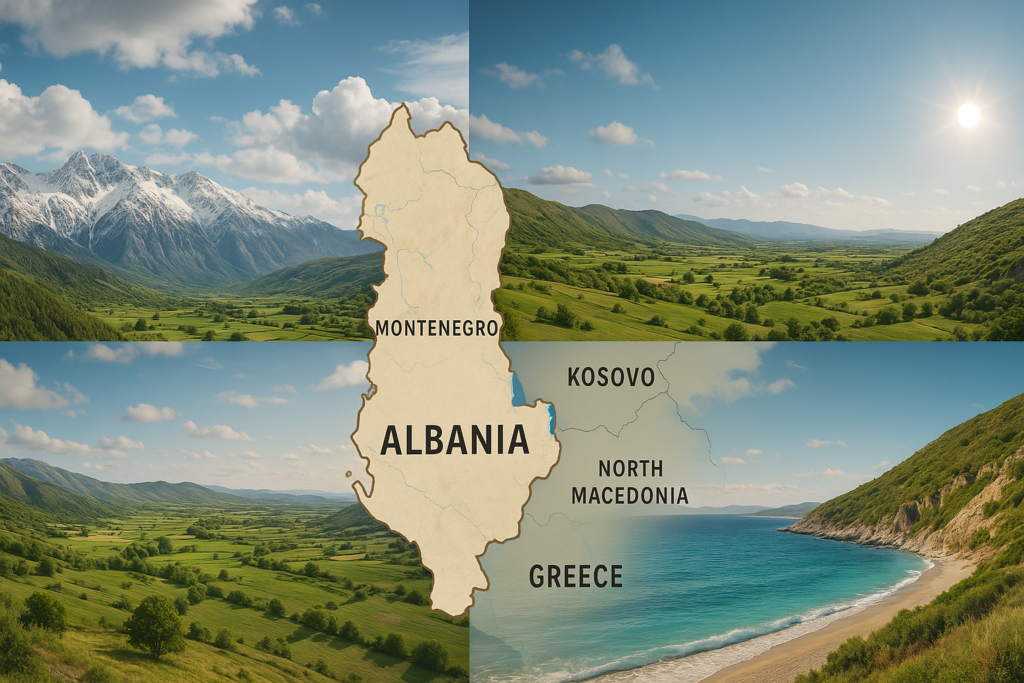
Position, Area & Borders
- Located in Southeast Europe, it shares borders with the Adriatic and Ionian Seas. (countrylicious).
- Greece (SE), North Macedonia (E), Kosovo (NE), and Montenegro (NW) are the neighbours.
- Area: 28,748 km2, which is marginally less than Maryland’s (countrylicious).
Topography & Climate Zones
- 70% of the land is mountainous, including the Ceraunian range and the Albanian Alps, also known as the “Accursed Mountains.” (Skillsoon).
- Freshwater landscapes and interior hills replace coastal plains.
- Climate: cooler inland, Mediterranean along the coast (hot, dry summers, mild, rainy winters)..
4. Political Structure & UN/NATO Membership
- Prime Minister: Edi Rama; system: parliamentary republic with a president and prime minister.
- NATO member since 2009, UN member since 1955, and EU candidate (Encyclopedia Britannica, Facts.now).
5. Demographics & Language
- Population: ~2.8 million (2023) (NTA Exam).
- Urbanization: ~65% urban (2024) (Encyclopedia Britannica).
- Ethnicity: Predominantly Albanian, with minorities like Greeks, Aromanians, Roma (Encyclopedia Britannica).
- Language: Albanian—unique Indo-European branch; two main dialects: Gheg and Tosk .
6. Culture & Traditions
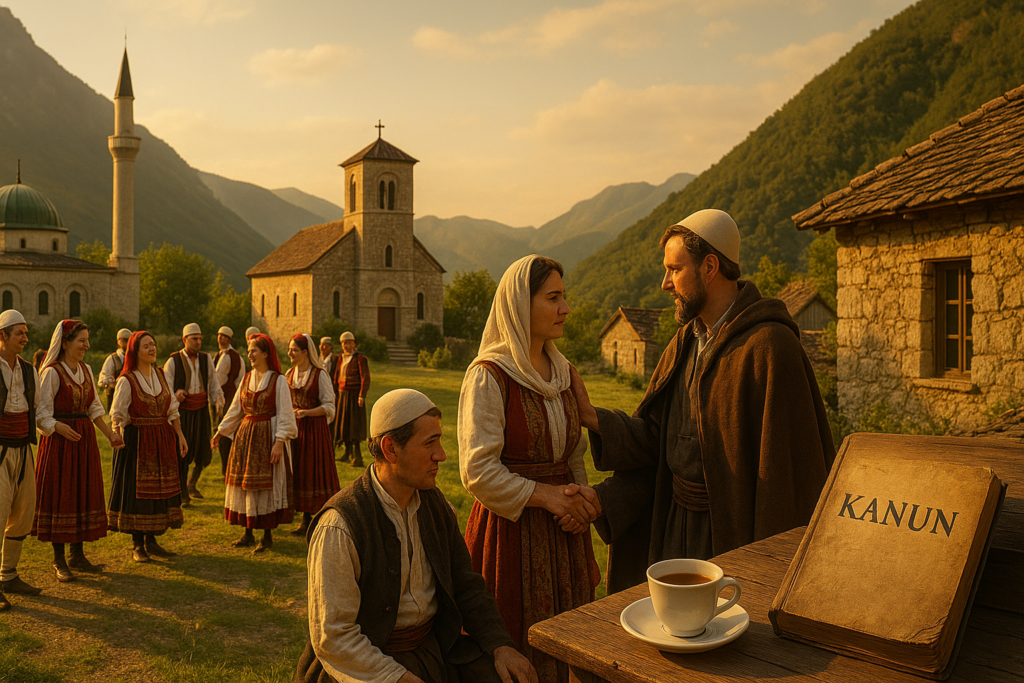
Religion & Tolerance
- Religious harmony: Orthodox (~20%), Catholic (~10%), and Islam (~70%) (NTA Exam).
- Coexistence includes the Tirana-based Sufi Bektashi order. (AP News).
Code of Honor: Besa & Kanun
- Besa (“promise/honor”) serves as the foundation for hospitality, directing moral conduct and providing refuge to strangers. (Wikipedia).
- Kanun: the traditional code governing honour, family, and blood feuds (All About Albania).
Music, Dance & Art
- UNESCO-recognized distinct iso-polyphonic singing (OhMyFacts).
- Vallja traditional dance and colourful costumes associated with local identities (OhMyFacts).
- Edi Rama introduced the influence of urban art, particularly in Tirana. (Rustic Pathways).
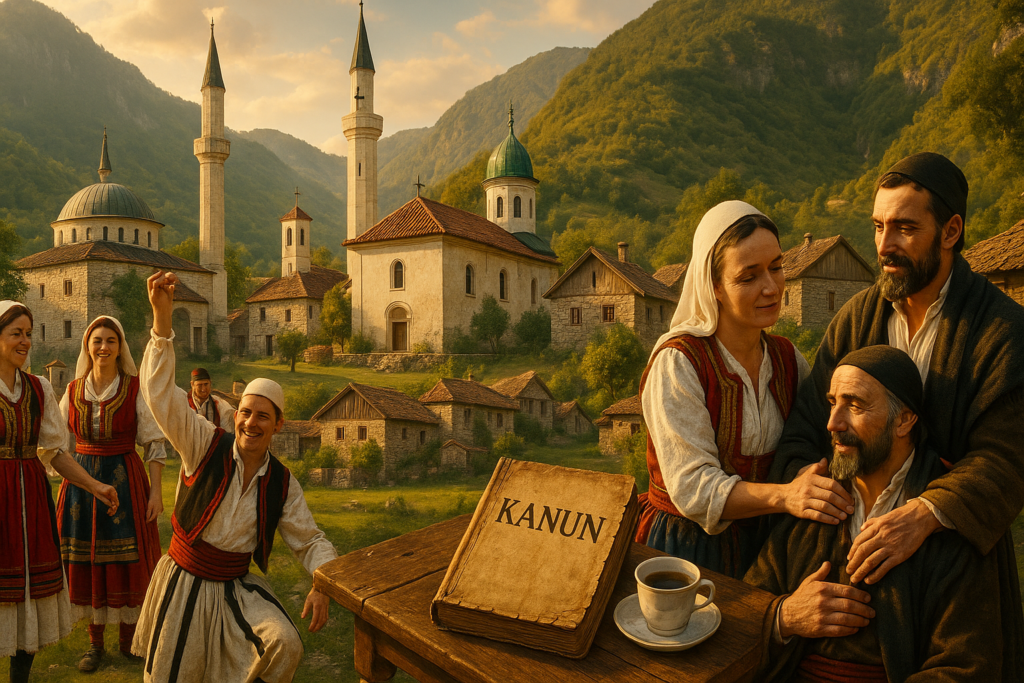
Cuisine
- Mediterranean diet: fruits, vegetables, olive oil, and seafood from coastal regions (Wikipedia).
- Signature dishes include fërgesë, tavë kosi, and byrek; beverages include raki.(OhMyFacts).
7. Economy & Industry
- GDP (2022): ~$18.9 B (NTA Exam).
- Important industries include mining, tourism, textiles, energy (about 97% hydropower), and agriculture (wheat, fruits, and olives). (Encyclopedia Britannica).
- Tourism-driven growth—more than 6 million visitors in 2023—with investments in beach resorts.
- Obstacles include organised crime, corruption, and infrastructure requirements. (Planet of Hotels).
8. Major Cities
- Capital Tirana: ~600k urban, ~1M metro; vibrant architecture, cultural renaissance (Wikipedia).
- The second-largest ancient port with Roman ruins, Durrës serves as the sea entrance to Albania.
- Vlorë: the third largest, established in the sixth century BC, where the coast meets the Ceraunian Mountains (Wikipedia).
- Northern cultural centre, Rozafa Castle, and religious diversity in Shkodër (Wikipedia).
- Berat is a UNESCO-designated “city of a thousand windows” featuring Ottoman architecture. (Condé Nast Traveler).
9. Tourist Attractions
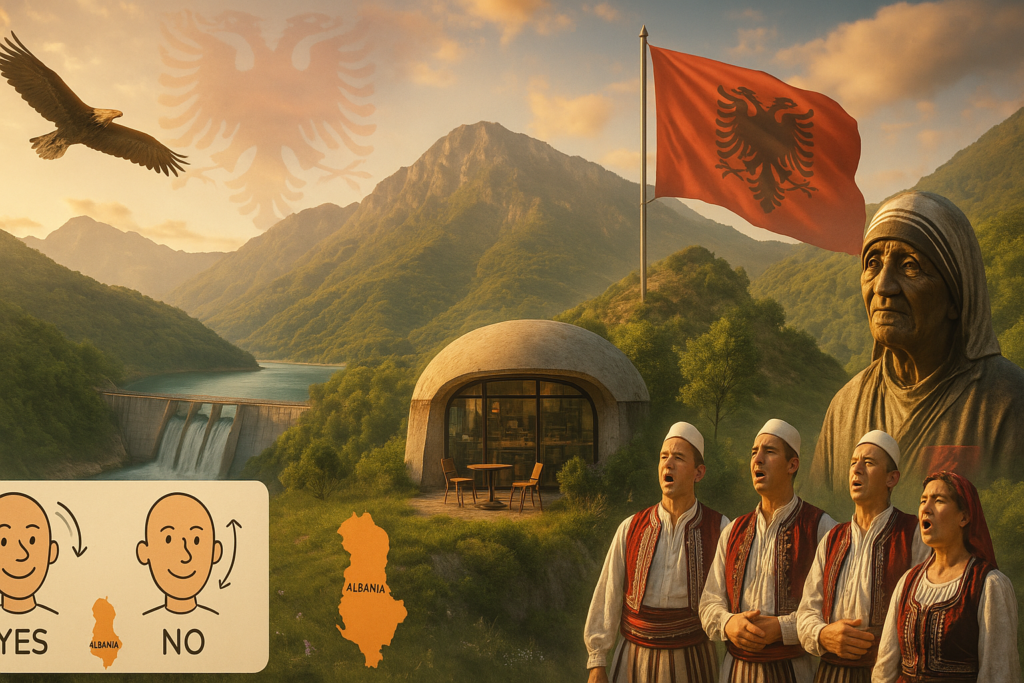
- Sarandë, Ksamil, and Himarë—the Albanian Riviera’s immaculate beaches and exciting nightlife (The Times).
- UNESCO sites featuring Ottoman and classical ruins are Gjirokastër and Butrint. (All About Albania).
- Albanian Alps: Trekking in the Accursed Mountains, Valbona, and Theth (The Times).
- Lake Ohrid, Apollonia Archaeological Park, and Blue Eye Spring (Facts.now).
- Museums of Bunk Art, Skanderbeg Square, and vibrant streets in Tirana (Condé Nast Traveler).
10. Unique Facts
- Known as the “Land of Eagles” (a 15th-century Skanderbeg double-headed eagle flag),(worldsfacts.com).
- Up to 750k bunkers were constructed under Hoxha and later converted into cafes and museums. (Facts.now).
- Albania lacks McDonald’s and uses distinct nodding (yes/no) gestures.(Facts.now).
- Mother Teresa: a national holiday in ethnic Albania (Facts.now).
- Hydropower accounts for about 97% of renewable energy. (Rustic Pathways).
- Sworn virgins, Kanun, and Albanian polyphony are examples of unusual customs. (All About Albania).
11. Challenges & Future Outlook
Present Challenges
- The role of corruption and the mafia in the expansion of tourism (thescottishsun.co.uk).
- Roads, ports, and urban amenities all need to be modernised.
- disparity in income and enduring reliance on agriculture.
Future Outlook
- Reforms are anticipated to be fuelled by EU membership and closer EU ties.
- Mining and tourism that is sustainable can strengthen the economy.
- sustained cultural renaissance with an emphasis on artistic urban development and legacy.
Conclusion
Albania is a new European gem that combines natural beauty, ancient heritage, and contemporary potential in the ideal way. Every corner reveals layers of cultural richness, from vibrant cities and immaculate beaches to Ottoman bazaars and hikes in the Albanian Alps. As the country enters the spotlight, addressing corruption, enhancing infrastructure, and striking a balance between tradition and growth are critical to its future. Albania provides an insightful and reasonably priced trip through time, culture, and landscape for both tourists and scholars.

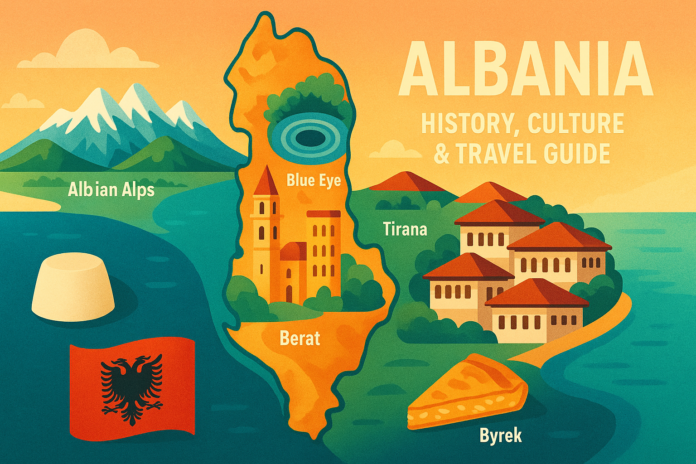

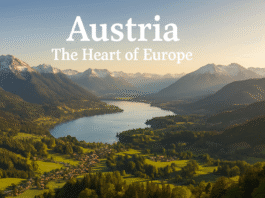
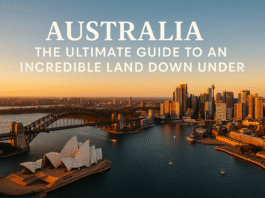
[…] 2.Albania: History, Culture, Geography & Travel Guide […]
[…] 2.Albania: History, Culture, Geography & Travel Guide […]